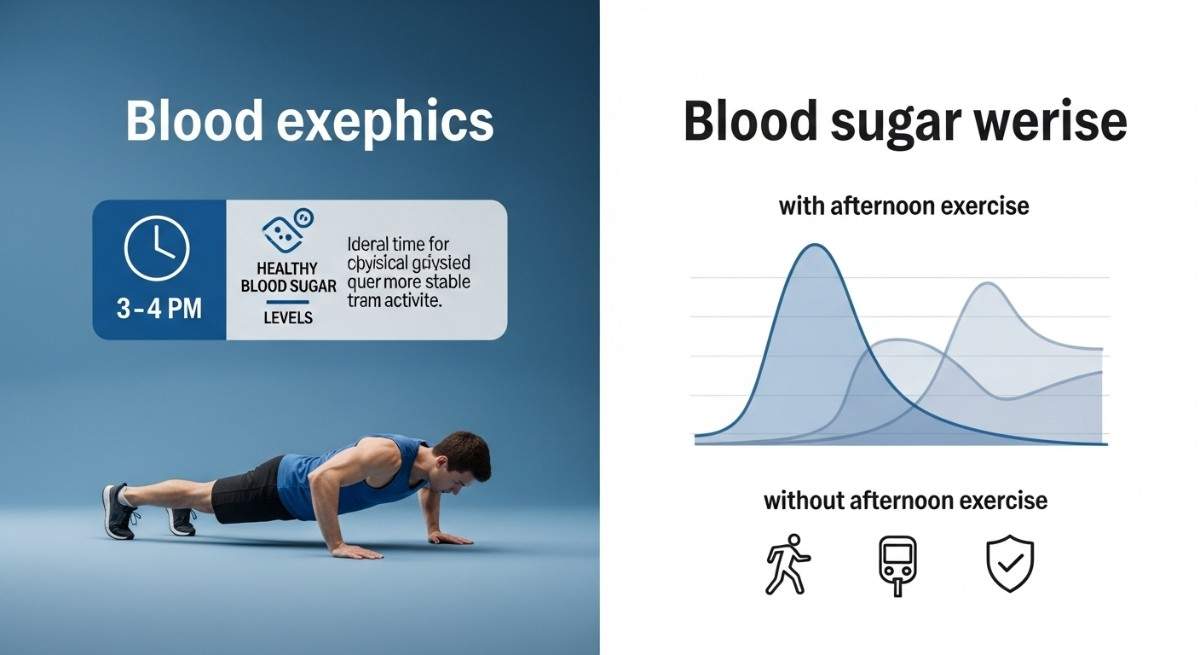Great Health Great Fitness
The Power of Timing: Why Afternoon Exercise May Be the Key to Better Blood Sugar Control

When it comes to managing blood sugar, what time you work out could be just as important as how hard you train. New research has revealed that exercising in the afternoon—especially between 2 PM and 5 PM—can have a more powerful effect on lowering blood glucose levels compared to morning or evening workouts. This discovery could transform how millions of people with diabetes or prediabetes plan their daily routines.
🔬 What the Study Found
Researchers studying the effects of exercise timing discovered that people who worked out in the afternoon showed greater reductions in HbA1c levels, a long-term marker used to measure blood sugar control. HbA1c reflects average blood glucose levels over two to three months, making it a crucial indicator for diabetes management.
Participants who exercised later in the day experienced improved insulin sensitivity, meaning their bodies became more efficient at using insulin to move glucose from the blood into cells. In simple terms, afternoon exercise helped their systems respond better to the food they ate—particularly after lunch, when blood sugar tends to rise.
🧠 Why Afternoon Exercise Works Better
The human body follows a natural rhythm known as the circadian rhythm, which influences hormones, energy levels, and metabolism throughout the day. During the afternoon, the body’s core temperature, muscle function, and enzyme activity often peak—creating an ideal environment for more efficient physical performance.
Additionally, since many people consume their largest meals around midday, afternoon workouts help the body process glucose more effectively, preventing post-meal sugar spikes. This means your workout is not just burning calories—it’s directly helping your body stabilize blood sugar.
🏃♂️ Who Can Benefit Most
This discovery is particularly good news for:
- People with Type 2 Diabetes – Afternoon workouts can help improve daily glucose patterns and may reduce the need for medication adjustments.
- Individuals with Prediabetes – Regular afternoon activity can delay or even prevent the onset of diabetes.
- Anyone Seeking Better Energy and Focus – Working out later in the day aligns with natural energy peaks, making it easier to sustain performance and motivation.
Even for those without blood sugar concerns, scheduling workouts during the afternoon can enhance endurance, strength, and overall workout quality.
💡 How to Apply It in Daily Life
You don’t need to spend hours in the gym to see results. The key is consistency and timing. Here are some simple ways to integrate afternoon exercise into your lifestyle:
- Take a 20–30 minute brisk walk after lunch.
- Schedule a short cycling or home workout between work sessions.
- Try light resistance or bodyweight training in the late afternoon.
- If you’re short on time, even 10–15 minutes of movement can make a difference.
If you’re managing diabetes or on medication, consult your doctor before changing your routine. Adjustments in timing or dosage may be necessary to prevent hypoglycemia (low blood sugar).
🌍 A Global Health Shift
With diabetes affecting over 540 million people worldwide, small lifestyle adjustments like exercise timing could have massive health impacts. This simple, no-cost strategy could help people improve their blood sugar control without relying solely on medication.
The takeaway is clear: It’s not just about moving—it’s about when you move.
By harnessing the body’s natural rhythm, afternoon exercise can become a powerful ally in maintaining stable energy, healthy glucose levels, and overall well-being.
